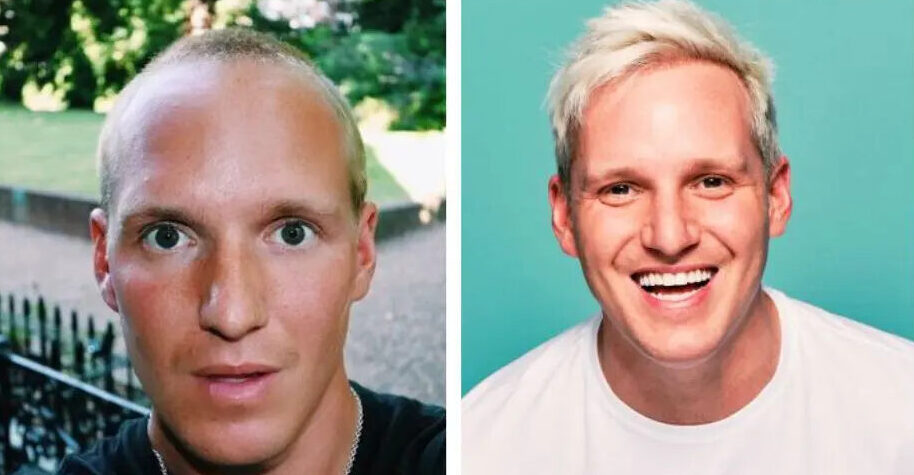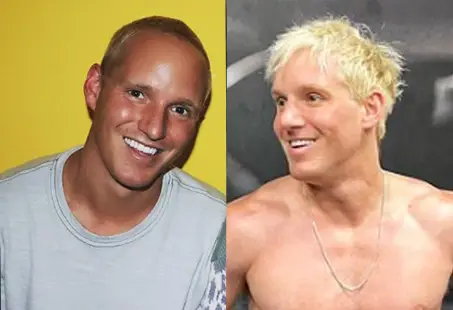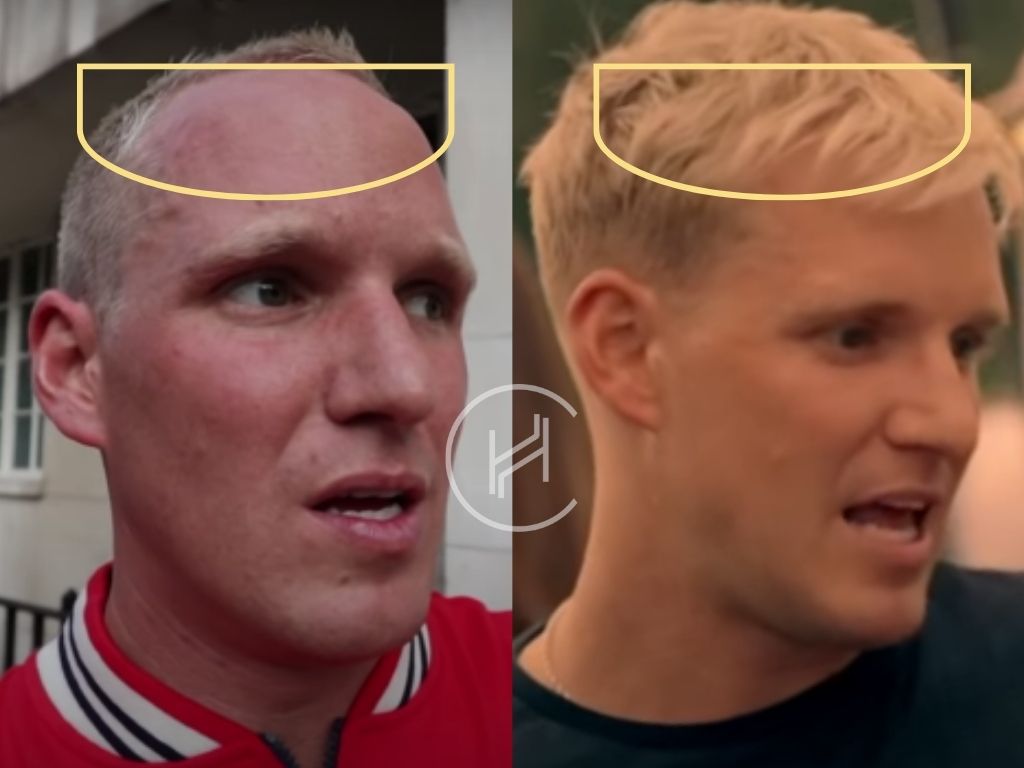
Reality TV personality and candy entrepreneur Jamie Laing made headlines in 2018 for his decision to undergo a hair transplant. The procedure marked a turning point in his public image, shifting from thinning locks to a fuller, more youthful appearance.
His journey with follicular unit extraction (FUE) involved 2,000 grafts to restore his receding hairline. The results not only boosted his confidence but also sparked conversations about male beauty standards in entertainment.
By openly discussing the transplant process, he helped normalize cosmetic procedures for men. The transformation showcases how modern techniques can create natural-looking results.
From E4’s *Made in Chelsea* to launching a £10M confectionery brand, his career spans multiple industries. Starting as a cast member in 2011, he became a household name, blending entertainment with sharp business acumen.
His 13-year stint on the reality show evolved from on-screen drama to behind-the-scenes leadership. By 2020, he took on the role of executive producer, shaping storylines and mentoring new cast members.
Off-screen, he disrupted the candy market with Candy Kittens. The vegan brand, valued at £10M, challenged giants like Haribo with its eco-friendly gummies. Its success cemented his status as more than a reality star.

Constant media attention magnified every aspect of his life, from hairstyles to business deals. Tabloids often highlighted his receding hairline pre-transplant, while industry publications later praised his openness about the procedure.
| Media Type | Pre-Transplant Tone | Post-Transplant Tone |
|---|---|---|
| Tabloids | Focused on flaws | Shifted to transformation stories |
| Industry Press | Rarely mentioned | Analyzed tech and market impact |
Post-surgery, he secured partnerships with hair care brands, leveraging his journey to advocate for male grooming. The shift showed how strategic authenticity could turn vulnerability into brand strength.
Spotting thinning hair at just 19, the reality star faced a challenge many young men dread. His hair loss journey began during university years, escalating as he entered the public eye. Surgeons later confirmed it as androgenetic alopecia—a DHT-driven condition affecting 30% of men under 30.
Initially, a receding hairline seemed like a minor concern. By his early 20s, thinning became undeniable during Made in Chelsea filming. Cameras magnified the gradual retreat of his laing hair, pushing him toward buzz cuts to mask the issue.
Early-onset baldness carries a unique psychological weight. For public figures, it’s compounded by scrutiny. Studies show men with premature hair loss report lower self-esteem—a trend mirrored in his styling shifts.
| Age | Hair Loss Stage | Styling Response |
|---|---|---|
| 19 | Mild recession | Longer styles |
| 22 | Visible thinning | Textured crops |
| 25 | Norwood Scale 3 | Buzz cuts |
The table above tracks how his approach evolved alongside his hairline. Unlike private individuals, his changes played out in tabloids—fueling both criticism and eventual admiration for his transparency.
The evolution of a public figure's appearance often sparks widespread curiosity, especially when it involves a major transformation. For one reality star, this meant transitioning from visible hair loss to a restored, confident look.

Early episodes of Made in Chelsea revealed gradual changes. Frame-by-frame analysis shows temporal recession advancing yearly. By 2017, a Norwood Scale 3 diagnosis confirmed significant thinning.
| Year | Hair Loss Progress | Styling Adaptations |
|---|---|---|
| 2011 | Minor recession | Side-swept fringe |
| 2015 | Thinning crown | Textured pompadours |
| 2017 | Norwood 3 pattern | Frequent buzz cuts |
After years of denial, consultations led to an FUE procedure. Surgeons calculated 2,000 grafts for optimal density. The choice marked a turning point in his hair transplant journey.
Post-op pictures now showcase a 60-70 FU/cm² density—nearly double the pre-surgery count. Styling flexibility returned, allowing quiffs and side parts. The results speak for themselves.
Public figures face unique pressures when addressing hair loss in the spotlight. For one TV personality, the choice to undergo restoration blended personal confidence with career pragmatism.
A close friend’s successful results became the tipping point. Their referral led to a clinic tour, where transparency about the process eased initial hesitations.
Key factors in selecting the clinic included:
Media leaks forced an earlier disclosure than planned. A Sun article exposed the surgery, shifting the narrative from privacy to public accountability.
Industry standards amplified the urgency. Reality TV contracts often tie appearance to marketability, making hair a career asset. Social metrics post-reveal showed:
This story underscores how cosmetic procedures intersect with fame. For many, it’s not just about vanity—it’s about reclaiming agency under scrutiny.
Advanced follicular unit extraction has revolutionized male pattern baldness treatment. This minimally invasive approach differs significantly from traditional strip harvesting methods.
The FUE method uses 0.9mm punches to extract individual grafts. Unlike FUT's linear scar, it leaves tiny dot marks that fade completely.
Surgeons selected this technique for its precision in addressing the frontal scalp. The 2,000-graft procedure focused on creating natural density gradients.
Single-hair units reconstructed the hairline for softness. Multi-hair grafts added density behind this transitional area.
Key distribution principles included:
The first 10 days involved saline sprays to prevent crusting. By week three, transplanted hairs entered a dormant phase before permanent growth.
Critical recovery milestones:
| Phase | Duration | Care Focus |
|---|---|---|
| Acute | 0-14 days | Swelling control |
| Transitional | 1-3 months | Folliculitis prevention |
| Growth | 4-12 months | Styling adaptation |
This hair transplant procedure demonstrates how modern techniques combine medical expertise with aesthetic vision. The results speak through restored confidence and natural-looking hairlines.
Discount clinics may seem appealing, but they often come with hidden risks. The Nottingham facility chosen for the procedure offered "two-for-one" deals, raising questions about prioritizing profit over patient care.
Unlike high-end medical facilities, this location resembled a domestic space. Patients reported mixed reviews, with some praising affordability while others cited rushed consultations.
Key evaluation points for prospective patients:
Informed consent processes were reportedly condensed at discount clinics. One patient shared, "They glossed over shock loss risks to close the deal."
Alternative selection criteria to consider:
This experience underscores the importance of vetting clinics beyond pricing. Quality procedures demand thorough research—not just celebrity back stories.
Determining the right number of grafts is crucial for natural-looking results. Surgeons assess factors like hair loss stage, scalp laxity, and donor area quality. For one TV personality, this meant a detailed evaluation of his Norwood classification.
Classified as Norwood 3, the pattern showed significant recession at the temples. This stage typically requires 1,800–2,500 grafts for full coverage. The goal was to rebuild the frontal third while maintaining donor reserves.
Key considerations included:
Extracting 2,000 grafts translates to 4,000–8,000 individual hairs. This volume balances coverage with donor safety. Studies show survival rates exceed 90% when performed by skilled surgeons.
| Aspect | Detail |
|---|---|
| Donor area reduction | 25–30% (safe threshold) |
| Procedure duration | 6–8 hours |
| Growth timeline | 12–18 months for final results |
Modern techniques allow precise angling to mimic natural growth patterns. This ensures the new hairline blends seamlessly with existing strands.
Understanding the financial investment behind hair restoration helps potential patients make informed decisions. The procedure's cost varies based on technique, location, and surgeon expertise.
In the UK, follicular unit extraction typically ranges from £4,000 to £15,000. The estimated £6,500 price tag for this case reflected Nottingham's lower operational costs compared to London clinics.
Key factors influencing the final amount:
High-profile patients often face unique pricing models. Some clinics offer discounts for promotional considerations, while others charge premium rates for enhanced privacy.
Value considerations beyond the initial transplant:
Most UK insurers classify hair restoration as elective, leaving patients to cover all expenses. Over five years, the total investment often exceeds the initial procedure cost by 30-50%.
Many wonder whether the golden hue of this celebrity's hair comes naturally or from a bottle. The truth? His natural shade is actually red—a far cry from the bright blonde he’s known for today.
In interviews, he’s admitted to monthly bleaching sessions. "Maintaining this look is a full-time job," he shared, referencing touch-ups every 4–6 weeks. His team relies on Olaplex to minimize damage, a staple for high-profile clients.
Chemical processing can weaken hair, especially after a transplant. Key considerations for dyed transplants:
Celebrity stylists like the Josh Wood Team emphasize gradual lightening. Their approach balances aesthetics with follicle health, proving even a star’s signature style requires science-backed care.
Modern hair restoration blends medical precision with personal confidence. The procedure’s success hinges on expert technique and realistic expectations, as seen in high-profile transformations.
This journey isn’t just about aesthetics—it reshapes public perception. Celebrities who share their experiences help normalize treatments, shifting beauty standards for men.
For those considering similar steps, consult surgeons with proven results. Use graft calculators and clinic checklists to make informed choices. The investment often pays off in both appearance and self-assurance.
Ready to explore options? Reputable UK clinics offer free consultations to plan your personalized approach.
